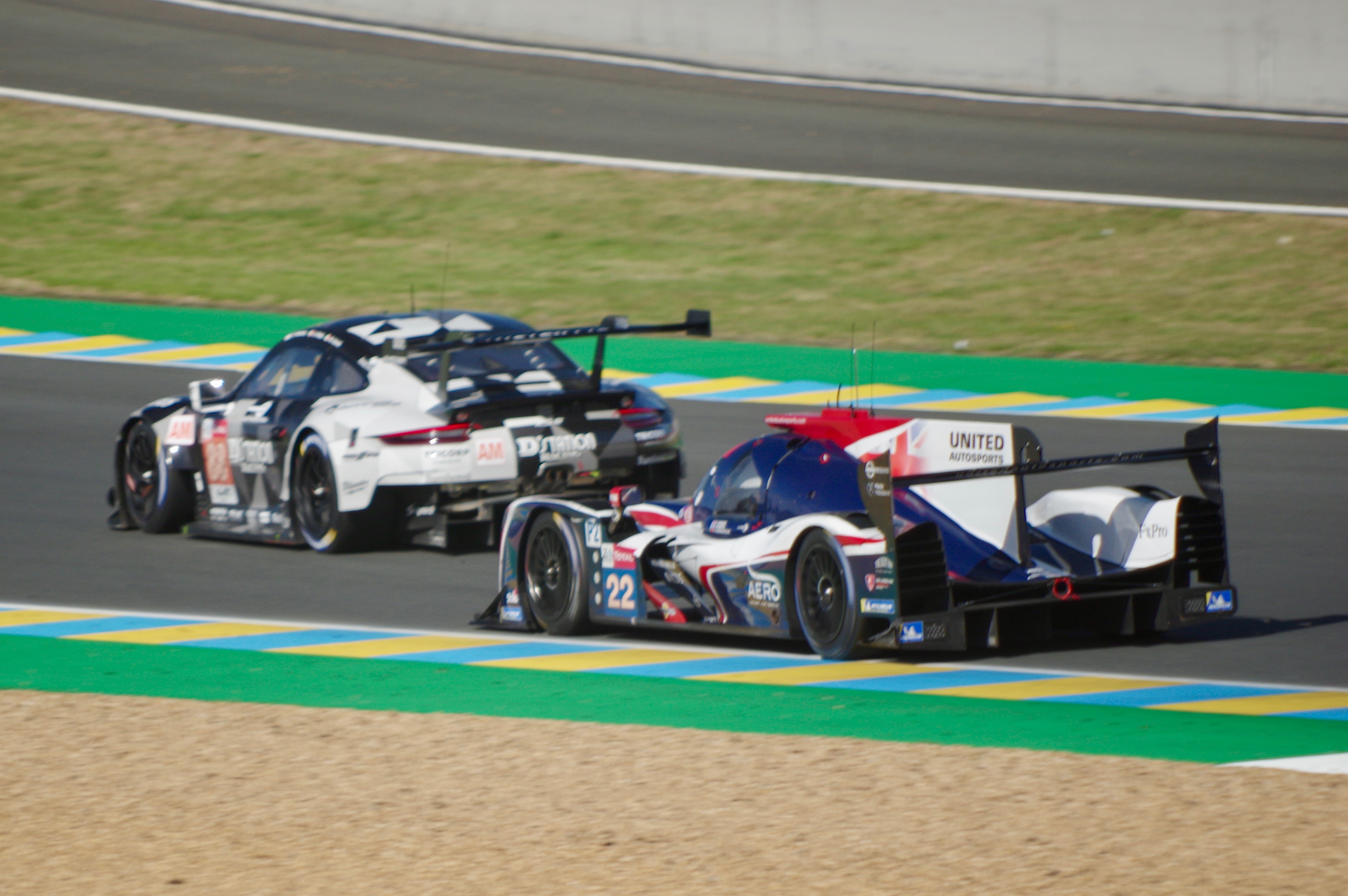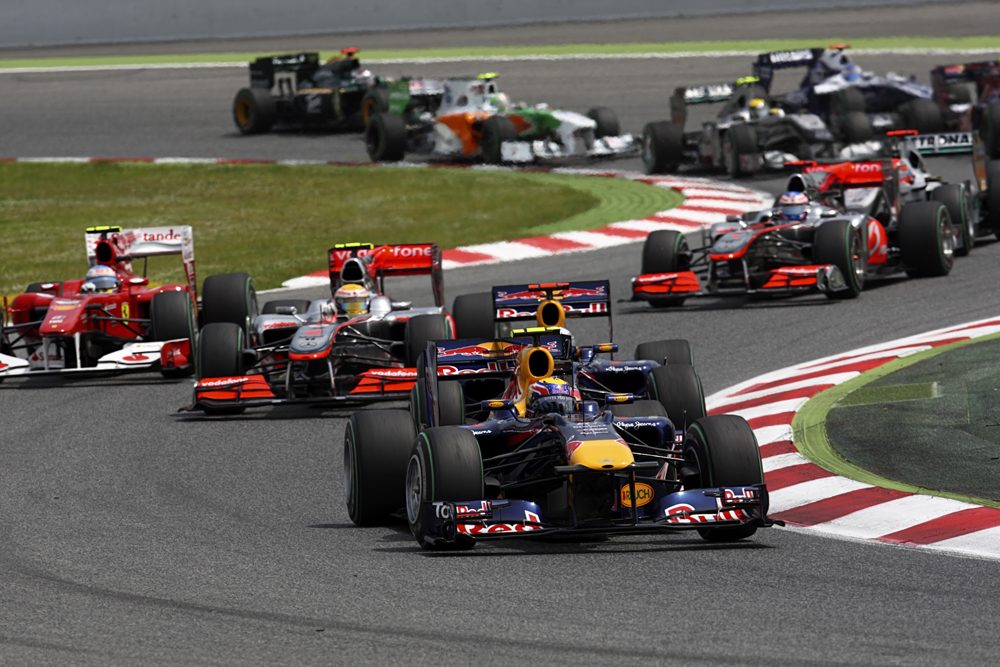Is Car Racing a Sport
Yes, car racing is a sport. It involves competitive racing of automobiles for speed.
Car racing is a thrilling, high-speed motorsport that encompasses various types such as Formula One, NASCAR, and rally racing, among others. Drivers hone their skills to master vehicular control and speed, while teams work tirelessly on engineering and strategy. This sport not only requires mental and physical demands on the racer but also relies on a symbiotic relationship between driver, crew, and machine.
Fans around the globe follow these races, captivated by the blend of technical precision, strategic planning, and the sheer adrenaline rush of head-to-head competition. Car racing’s recognition as a sport is underpinned by its organized competition, governed rules, and presence of professional, amateur participants worldwide.

Credit: en.wikipedia.org
The Thrill Of Speed: Car Racing’s Claim To Sport Status
The thrill of speed is essential to car racing, elevating it beyond mere driving. As engines roar and tires screech, car racing emerges as a spectacle of human skill and mechanical precision. This fast-paced world blends danger, strategy, and endurance, sparking debates on its status as a sport. For enthusiasts and drivers alike, it’s clear that car racing is much more than just a hobby; it’s a high-octane challenge that demands respect.
The Definition Of Sport
What makes an activity a sport? It must include these three elements:
- A competitive aspect where participants strive to outdo each other.
- A requirement for skill and strategy to excel.
- Physical effort and practice to improve performance.
Car racing ticks all these boxes. Drivers compete fiercely for first place. They train relentlessly and strategize to cross the finish line ahead of opponents. Car racing fulfills the criteria for a sport, pushing both car and driver to their limits.
Physical And Mental Demands On Drivers
Think driving isn’t physically demanding? Think again! Professional drivers undergo intense training regimes. These improve their strength, particularly in the neck and core, to withstand high G-forces. Quick reaction times and endurance are also critical.
| Physical Skills | Mental Skills |
|---|---|
| Core stability | Sharp focus |
| Neck strength | Quick decision-making |
| Stamina | Emotional control |
| Reflexes | Strategy planning |
Car racing places immense mental strain on drivers too. From making split-second decisions at high speeds to staying focused for hours, the cognitive demands are steep. Mental strength is key in coping with the pressure of competition.
From Horsepower To Endurance: Components Of Racing
Racing is not just about speed; it’s a blend of power and endurance. Drivers harness the raw strength of their cars, pushing their limits while maintaining precision over long distances. This mix makes car racing a thrilling sport. It combines the intricate technology of the vehicles with the physical and mental stamina of the drivers.
Technology And Engineering In Racing
Car racing thrives on cutting-edge technology. Teams pour resources into engineering feats that make cars faster, safer, and more reliable.
- Aerodynamics shape how air moves over a car, affecting speed and stability.
- Engine performance, where power meets efficiency, decides a car’s speed.
- Safety features, such as roll cages and harnesses, protect drivers.
Each race is a test of these technological advancements. The team with the best combination of mechanics and technology often takes the lead.
Training And Strategy For Race Day
Preparation is key in car racing. Drivers and their crews spend hours strategizing before setting foot on the track. Physical fitness and mental sharpness are crucial.
Drivers undergo rigorous training to endure the physical demands of racing. They also learn about:
- Track analysis to understand each curve and straightaway.
- Car behavior so they can handle their vehicle in any condition.
- Pit stop timing for optimal refueling and repairs.
A sound strategy can be the difference between victory and defeat. It might include planned overtaking maneuvers or fuel management techniques to outlast the competition.
Comparing The Racetrack To The Field
Is car racing a sport? This question sparks debate. Imagine the racetrack and the sports field. They’re different, yet share common ground. Picture the lines of racing cars at a start line. Now, picture athletes poised on a track. Both pulsate with anticipation. This section puts car racing and traditional sports side by side. Let’s peel back the layers and reveal the sportsmanship in both arenas.
Teamwork And Individual Skill In Sports
Racing and team sports fuse collective effort with personal talent. A driver’s victory credits the team. Pit crews and strategists are unsung heroes.
- Racecar Driver: Skills in precision, quick decisions.
- Pit Crew: Tire changes, refueling, done in seconds.
- Coach: Game plans and plays on the field.
- Athletes: Execute plays, showcase finesse.
Each role is vital. Both sports require trust in teammates’ abilities.
Adrenaline And Athleticism Across Disciplines
| Sport | Adrenaline Factor | Athleticism Required |
|---|---|---|
| Racing | High-speed action | Stamina, focus, fast reflexes |
| Football | Dynamic plays | Strength, agility, endurance |
| Basketball | Fast-paced scoring | Vertical leap, speed, coordination |
Adrenaline surges in both racing and field sports. Athletes and drivers showcase peak performance under pressure. Both disciplines demand physical excellence and mental sharpness.

Credit: en.wikipedia.org
Cultural Impact And Popularity
The world of car racing transcends mere competition to become a vibrant cultural phenomenon. From its thundering engines to the passionate fans, this sporting spectacle commands global attention. Car racing has firmly established itself not just as a sport – but as a major cultural force with widespread popularity.
Global Racing Events And Fan Bases
Global racing events like Formula 1, NASCAR, and the Indy 500 are more than just races; they’re cultural milestones. Each event attracts millions of viewers, with live broadcasts uniting fans across continents. Racing teams and drivers become household names, inspiring excitement and loyalty in equal measure.
- Monaco Grand Prix: Glamour and history blend on this iconic circuit.
- Le Mans 24 Hours: A testament to endurance, skill, and automotive technology.
- Daytona 500: Known as “The Great American Race,” it’s a centerpiece for NASCAR fans.
Economic Influence Of Motorsports
Motorsports have a powerful economic impact that reverberates beyond the track. Major races boost local economies, with employment, tourism, and retail all feeling the surge. The following points illustrate how car racing shapes economies:
| Aspect | Impact |
|---|---|
| Job Creation | New careers in various sectors, from engineering to hospitality. |
| Tourism Growth | Increased visitors fuel hotel, restaurant, and local transport businesses. |
| Brand Sponsorships | Companies gain visibility and marketing success through team sponsorships. |
Clearly, car racing drives passion and commerce alike, securing its place as a sport with remarkable cultural and economic prowess.
Challenges And Controversies
The electrifying world of car racing often raises eyebrows with its unique challenges and controversies. Critics question its sporting status, often igniting debates. This section delves into safety concerns and environmental considerations. It highlights key issues reshaping the future of car racing.
Safety Concerns in Racing
Safety Concerns In Racing
Car racing tests the limits of human and machine capabilities. Accidents and injuries remain top concerns. Teams work on safety protocols and car designs to protect drivers. New technology includes enhanced helmets and barrier systems.
- Crash-Prevention Innovations: Automatic braking and collision avoidance systems.
- Improved Gear: Fire-resistant suits, gloves, and advancements in seatbelts.
- Medical Facilities: Quick response teams and on-site medical provisions.
Environmental Considerations and the Future of the Sport
Environmental Considerations And The Future Of The Sport
The environmental impact of car racing draws criticism. Yet, the sport pushes towards sustainability.
| Aspect | Green Initiatives |
|---|---|
| Emissions | Use of biofuels and hybrid engines to reduce carbon footprint. |
| Energy Recovery | Systems that store and reuse energy generated by cars. |
| Recycling | Programs to recycle tires and other materials from races. |
Electric Racing Series like Formula E gain popularity. These series set new standards for eco-friendly competition. They strike a balance between thrill and sustainability.
Frequently Asked Questions On Is Car Racing A Sport
What Defines Car Racing As A Sport?
Car racing is defined as a sport due to its competitive nature, where drivers showcase their skills and speed in vehicles. Organizations like FIA govern races, enforcing rules and ensuring fair play.
How Do Drivers Train For Car Racing?
Drivers train through rigorous physical workouts, simulators, and track days to enhance their reflexes, stamina, and understanding of racing dynamics. Nutrition and mental preparation are also key components.
Is Car Racing Popular Worldwide?
Yes, car racing enjoys global popularity, with Formula 1, NASCAR, and rally events drawing millions of fans. Its reach extends through international championships and diverse racing styles.
What Are The Risks Of Car Racing?
Car racing involves high speeds and close competition, which can lead to accidents. However, safety measures like roll cages, harnesses, and helmets help mitigate risks to drivers.
Conclusion
Car racing combines skill, strategy, and athleticism, solidifying its place as a bona fide sport. Fans worldwide recognize this high-octane competition for its sheer excitement and dedication required by drivers. So, gear up for adrenaline-pumping races that celebrate human triumph and mechanical prowess – true hallmarks of sporting greatness.







